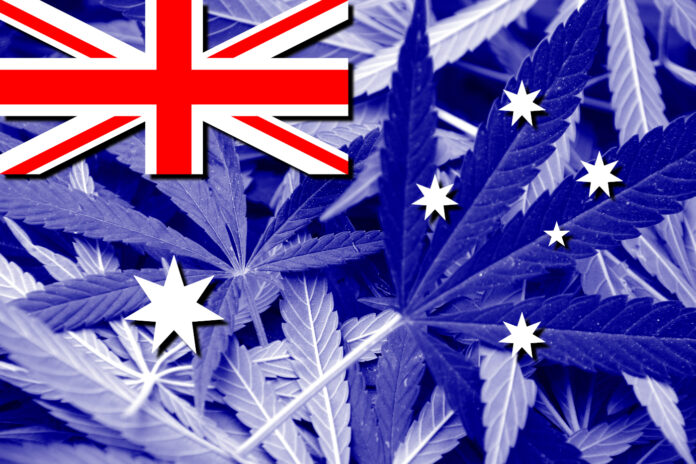Over the past several years, I’ve been fortunate to travel the world thanks to cannabis. From rooftop parties in Tel Aviv and Toronto to underground events in Santiago and Sydney, the memories and stories are enough to write a hefty book about taking part in the most historically relevant cultural evolution of our lifetimes. Some places and experiences are more memorable than others, and one place that stood out in the early years is not just a country but also a continent: Australia.
To discuss cannabis legalization in the land Down Under, we must examine the commonwealth’s history. When you mention Australia to Americans, many recall its past as a prison island, its assortment of deadly creatures, a big desert, Vegemite, and hot weather. I can confirm these are stereotypes. Yes, between 1788 and 1868, 164,000 British convicts were transported to Australia. However, this doesn’t mean all 25.6 million residents are descendants of criminals. More than a fourth of the population comprises modern-day immigrants, primarily of European or Asian descent. The continent’s sixty-six venomous species are fourteen fewer than the eighty deadly species found throughout Mexico. And while the interior is extremely dry, only 35 percent can be described as desert. Not everyone eats Vegemite, and it’s not a staple at every meal. The weather in most parts of the country is on par with California several months out of the year, primarily in the fall and spring.
Australia is one of fifty-four countries around the world in the Commonwealth Association. While several commonwealth countries do have historical ties to the British Empire, many opted to join the association regardless of ties to Britain’s colonial past. The founding Commonwealth countries are Australia, Canada, India, New Zealand, Pakistan, South Africa, Sri Lanka, and the United Kingdom. These are the places with the greatest presence and representation of British alliances, from government structures to ideologies—including those about cannabis.
Legalization history
Now that we are caught up on everything we missed in history class, let’s look at how cannabis has been treated in the largest country in Oceania.
Cannabis arrived on the shores of Sydney way back in 1788. The first hemp plants were brought by Sir Joseph Banks’s First Fleet on a mission to colonize the land. The initial plan was to produce hemp commercially in Australia and, indeed, cannabis was one of Australia’s primary crops up until cannabis was declared a dangerous drug during the 1925 Geneva Convention. Before this, hemp was considered one of the country’s essential crops because it was used by the Empire for a plethora of things, specifically woven materials.
Beyond illicit use, both cannabis and hemp went dormant across Oz for decades. Like other countries with a heavy Western influence, Australia saw a spike in “marijuana” use during the sixties—along with heroin and LSD. Several politicians embraced then-President Richard Nixon’s war on drugs. In Australia, Queensland premier Jon Bjelke-Peterson and New South Wales premier Robert Askin began cracking down on rebellious youth by criminalizing cannabis across the board. The challenge of controlling marijuana use continued into the 1970s as the country saw an influx of users by way of American troops on leave from Vietnam. This resulted in many efforts to eradicate all cannabis growing in the bush, particularly in New South Wales’s Hunter region.
Fun fact: Like Mendocino County in Northern California, the Hunter Valley of NSW is just as well-known for producing phenomenal wine grapes as it is high-quality cannabis.
The war on cannabis and hemp continued for most of the nineteenth century, until a shift in attitudes occurred in the late ’90s. In 1998, to the surprise of many, Victoria became the first Australian state to pass legislation allowing the commercial production of industrial hemp. It took more than 60 years for the country to come back to its roots… literally. In 2004, the Australian Capital Territory passed the Hemp Fibre Industry Facilitation Act, and the Western Australia government passed the Industrial Hemp Act the same year. By the time NSW created the Hemp Industry Act in 2008, it seemed things were moving in the right direction, at least for the iteration of the plant containing low THC levels.
Today’s legislative landscape
Fast-forward a handful of years and a few more hemp production acts in additional states and territories, and big movement happened. On October 17, 2015, the federal government announced it would legalize commercial growing of cannabis for medicinal and scientific purposes. Today, Australia is one of forty-two countries around the world that acknowledge cannabis for its medicinal value. The United States remains in the other camp, members of which increasingly are viewed as out of touch and overly invested in debunked stigmas.
In 2016, Australia’s Parliament legalized medical cannabis under the Narcotic Drugs Amendment. While not all states and territories adopted the new federal rules, the law was still a big win for residents. The Australian Capital Territory, seat of the country’s central government, legalized recreational cannabis use in September 2019, allowing its 400,000 residents ages 18 and older to possess as much as fifty grams and grow as many as four plants for personal use. Much like in the U.S., the legislation violated federal law.
Nevertheless, the first domino in Australia has fallen. If the U.S. model is any indication, others will follow in fairly rapid succession. Perhaps the U.S. will follow Australia’s lead and federally legalize medical use, at least—and the sooner, the better.

Lance C. Lambert has spent years cultivating brands and telling stories, primarily in the mainstream digital media and marketing space prior to making the jump to the legal cannabis industry in late 2013. In 2021, he planted his knowledge and passion-first attitude at GreenBroz, where he’s tasked with growing the company’s footprint at home and in emerging markets around the globe.











